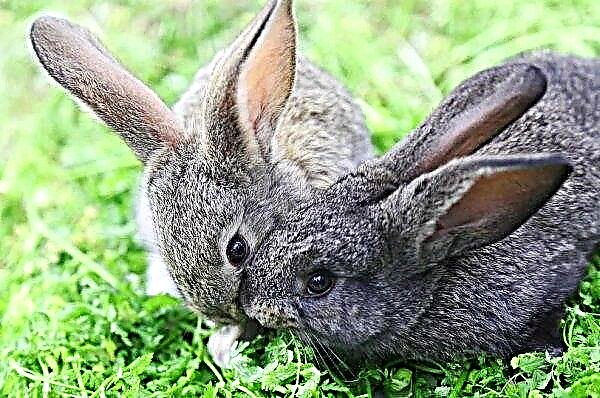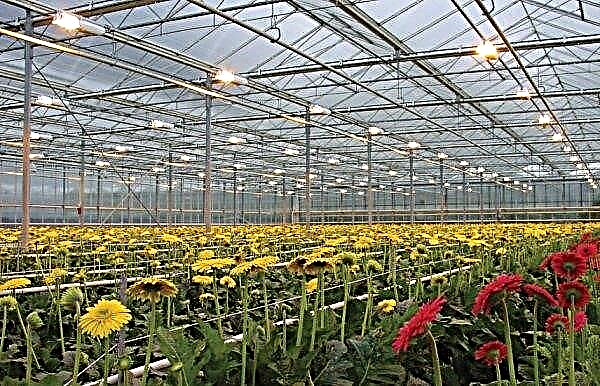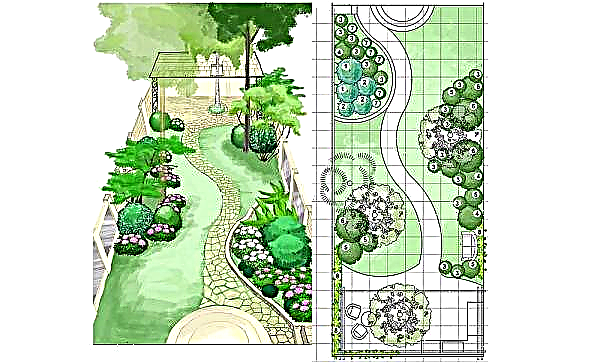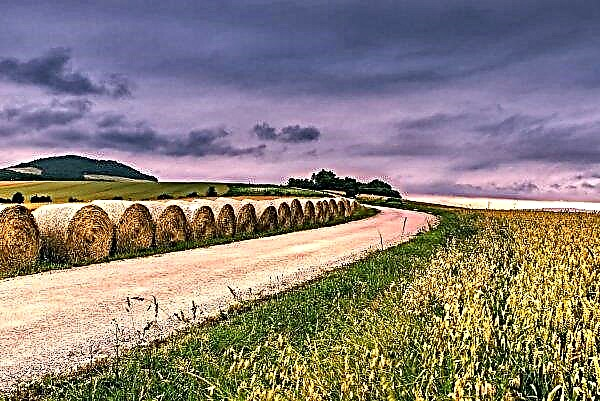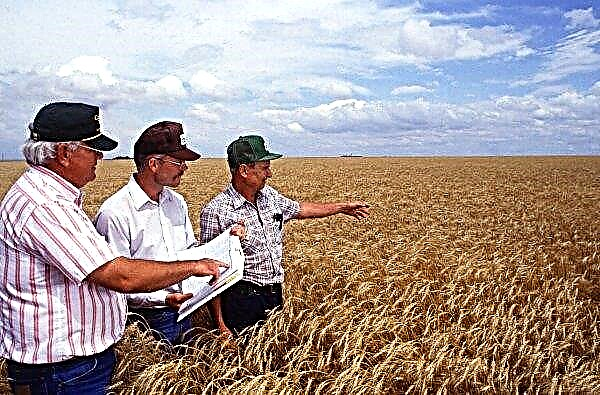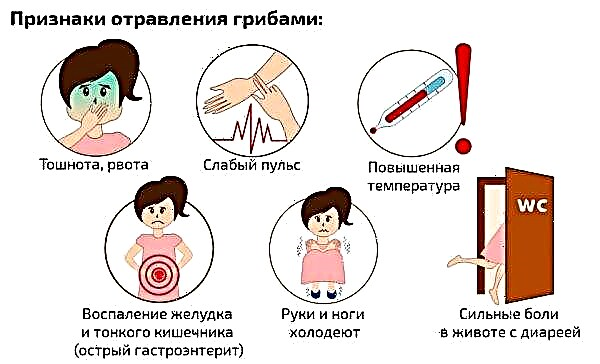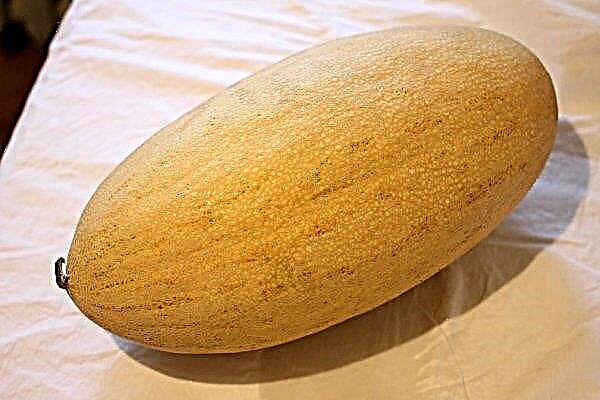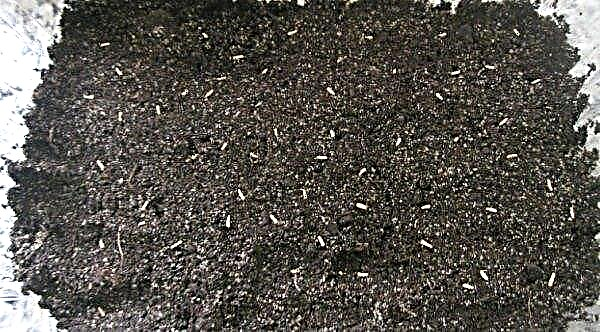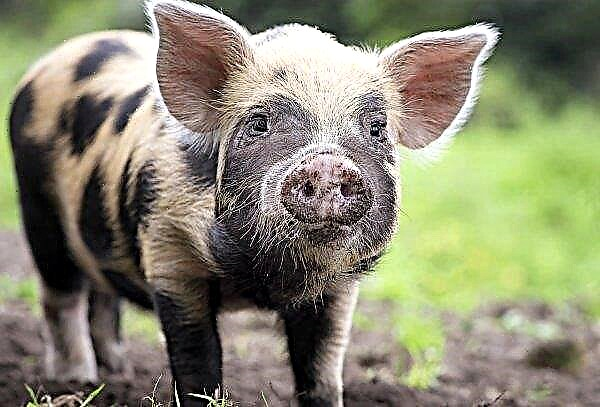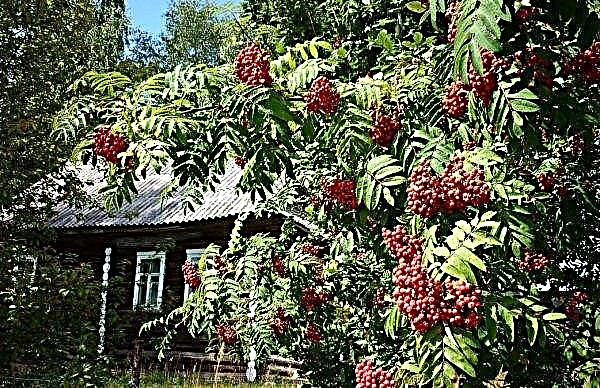Black currant is grown in many suburban areas, and one of the most famous varieties of this culture is the Lama variety. Its berries have a useful chemical composition and are used to prepare various blanks, and the bush is distinguished by good immunity and excellent winter hardiness. A detailed description and characteristics of Lama currants, especially their planting, cultivation and reproduction, as well as methods of combating possible diseases and pests - further in the article.
Grade Geography
The black currant variety Lama was bred in 1974 by employees of the Siberian Research Institute of Horticulture named after M.A. Lisavenko (Russia). A new variety was obtained as a result of crossing the variety Pamyat Michurin with selective form 7-63-3.
N.S. Antropova, Z. Zotova, I.P. Kalinina and N.I. Nazaryuk worked on the cultivation of the variety - they sought to develop a new species of blackcurrant, characterized by a mid-early ripening period and high yield.
Did you know? Aromatic sauces for fish and meat dishes are prepared from the dried leaves of blackcurrant.
You can grow Lama currants in regions with a continental climate, which is characterized by moderately warm summers and frosty winters with thick snow cover. Planting varieties in the southern regions is undesirable, because the bushes do not tolerate heat and drought.
Botanical Description
In appearance, the bush of Lama currant is not much different from representatives of other varieties of this culture. On the plot, the plants look magnificent, and with the help of pruning they can be neatly shaped.

The botanical description of Lama currant is presented below:
- The variety belongs to vigorous, but the branches of the bush are compact.
- The shoots are powerful and straight, covered with a smooth and strong bark of purple color, and after lignification they turn dark brown.
- The leaves of the plant are large in size and have a leathery dark green surface, grow on thick purple petioles.
- Each leaf consists of 3 blades having pointed tops. Small cutouts are visible between the blades.
- Flowers are large and goblet in shape. Their sepals are pink-purple and tightly twisted.
- Berries are grouped in a brush about 5 cm long. The fruits are located on thick and straight axes close to each other.
Characteristic
Before planting the Lama variety on its site, it is recommended that you familiarize yourself with its main characteristics. Bushes have many positive qualities, but they also have disadvantages.
After reviewing the yield indicators and characteristics of plant resistance to drought and frost, you can make the right decision about the rationality of growing this crop in a selected place.

Drought resistance, frost resistance
Plants of this variety tolerate frosts well and, in the presence of stable snow cover, can withstand a temperature drop of -30 ° C.
Lama is characterized by poor drought tolerance. With insufficient rainfall, currants need additional watering from the moment of blossoming of inflorescences until the end of September. Otherwise, a significant decrease in yield is observed, and the berries acquire a sour taste.
Productivity and fruiting
The main qualities that gardeners pay attention to when planting Lama blackcurrant on a site are the yield and fruiting time of the bush. Analysis of this information allows you to plan the time of picking berries and further use of the fruit.
Did you know? Natural currant is made from blackcurrant berries, which is widely used in the food industry.
The main characteristics of the yield and fruiting of Lama currants are as follows:
- the bush begins to bloom in May;
- the variety is mid-early - the berries ripen in about mid-summer;
- crop yield is 0.86 kg / 1 m² or up to 2.7 kg from each bush;
- the fruits ripen almost simultaneously.
Berry size, taste
The berries of Lama currant are intended for technical use and do not have characteristic distinctive features in comparison with other varieties of culture.

The main characteristics of the fruit are presented below:
- berries have a regular spherical shape;
- the weight of one fetus is 1–2.4 g;
- the skin of the berries is smooth and dense, painted black;
- dense pulp has a pleasant sweet and sour taste and exudes a light aroma;
- the number of seeds inside the berry is average;
- fruits contain 7–11% sugar and a lot of vitamin C (164.5 mg / 100 g).
Advantages and disadvantages
Currant Lama attracts many gardeners with its many positive qualities.
- The main advantages of the variety include:
- high productivity;
- excellent commodity characteristics and vitamin composition of berries;
- good winter hardiness;
- universality of the use of fruits;
- high transportability;
- good immunity;
- the possibility of mechanical harvesting;
- friendly ripening of fruits.
- The disadvantages of Lama currant include such qualities:
- small sizes of berries;
- decrease in yield with insufficient watering;
- the need for regular pruning.
Landing Features
Planting black currant Lama has no distinguishing features and is carried out on the same principle as the planting of the other varieties of this crop.

Before this procedure, you need to prepare the soil on the site, enriching it with useful substances, and the process of planting seedlings is simple, so even a beginner gardener can cope with it. But in order for the currant to take root successfully, it needs to be planted on the site at the appropriate time, choosing a quality planting material.
The timing
Planting young bushes is recommended in the first half of October. This will allow the bush to take root well before frost, to winter successfully and begin active growth with the onset of the first spring heat.
Important! In order for the bushes of Lama currant to have enough space for growth, they are placed at least 1.5 m from each other.
In regions with harsh winters, the Lama variety can be planted in early spring, as soon as the snow melts and the ground thaws. But spring planting must be done strictly before the swelling of the buds in order to protect the bush from stress.
Conditions
To facilitate the rooting of currant bushes, it is necessary to plant in dry weather at a temperature of +5 ... + 7 ° С. The root system of plants does not respond well to sudden cold snap, therefore, in the fall, planting should be carried out no later than a month before frosts, and in spring - after the establishment of a stable plus temperature.

Lama blackcurrant needs nutritious soil, therefore, the area intended for growing bushes, begin to be prepared 2-3 weeks before planting.
In this case, you must perform the following actions:
- Dig the ground to a depth of about 40 cm.
- Remove all plant debris and weed from the soil.
- Level the ground.
- Dig out pits about 40 cm deep and 50-60 cm in diameter.
- Prepare a nutritious soil mixture - the soil obtained by digging a hole, mix with a bucket of compost, 200 g of superphosphate and 40 g of wood ash.
Choosing the right place
So that the young bushes of the black currant Lama are well rooted, and the plant subsequently brings an abundant crop of berries, you need to choose a suitable place for planting it.
Important! You can not plant Lama currants in wetlands - this will lead to the fact that the bushes will be affected by fungal diseases.
It must meet the following requirements:
- sufficient sun exposure - the bushes prefer to grow in small partial shade, but a severe lack of sunlight will adversely affect the crop yield;
- protection from the wind and the absence of drafts - cold air currents can provoke the development of fungal diseases or cause mechanical damage to the branches of the bush;
- location in the lowland - plants like moist soil, so it is not recommended to plant them on a slope or hill;
- the location of groundwater is not closer than 1.5 m from the surface of the soil, - with an excess of moisture in the soil, the roots of currant begin to rot;
- fertile and light soil of neutral or weak acidity - well passes air, water and solar heat to the roots of the plant located near the surface of the soil.

Selection and preparation of seedlings
The success of growing Lama currants largely depends on the quality of the planting material. It is recommended to choose it in specialized stores and nurseries in order to guarantee a purchase of a specimen that fully complies with the listed varietal characteristics.
Did you know? To meet the daily requirement of the body for vitamin C, an adult needs to eat 40 berries of black currant.
When buying seedlings, you need to pay attention to their appearance, identifying healthy bushes by such characteristic signs:
- seedling age - 1-2 years;
- branched root system containing at least 3-4 powerful roots about 20 cm long;
- smooth trunk surface without growths and mechanical damage;
- the presence of 1-2 lignified branches with buds formed on them;
- the absence of leaves on the branches of the bush - they draw moisture from the plant, preventing its rapid rooting.

A few hours before planting, seedlings need to be prepared by performing the following actions:
- immerse the root system in water for 2-3 hours;
- remove dry and damaged roots;
- dip the bottom of the plant in a semi-liquid mixture of clay and water.
Landing algorithm
Planting a black currant Lama is not difficult, but you need to correctly place the seedling in the hole and follow a certain sequence of actions.
A step-by-step algorithm for planting a bush is presented below:
- Fill the prepared planting recess with nutritious soil mixture to 2⁄3 of the depth.
- Top with about 5 cm of ordinary garden soil. Pour 10 liters of water into each well.
- After completely absorbing moisture, place the roots of the seedling in the planting pit at an angle of 45 ° so that the root neck is 10 cm below the surface of the earth.
- Evenly spread the roots of the bush to the size of the hole. Sprinkle them with soil, periodically shaking the seedling to eliminate the voids between the soil and the roots.
- After filling the planting pit, tamp the ground around the plant with your hands. Water the seedlings, spending 10 l of water for each of them.
- After completely absorbing water, cover the soil around the currant with a layer of mulch from straw or sawdust.
- Trim all branches of the seedling so that no more than 4 buds remain on each of them - this will stimulate the growth of the bush.

What can be planted nearby
In summer cottages with a limited area, gardeners are forced to save space and grow several different crops nearby. But at the same time, several requirements must be observed, i.e. blackcurrant can compete with some plants for natural resources, as well as have common diseases and pests with them.
- It is recommended to plant the following plants near the Lama blackcurrant in the area:
- honeysuckle - both cultures are unpretentious in leaving, have a similar chemical composition and well tolerate low air temperatures;
- yoshta - practically not affected by a kidney tick that threatens blackcurrant, and is characterized by high endurance;
- blueberry - is a moisture-loving crop, therefore, it gets along well next to currants, requiring regular watering;
- Strawberry - the currant aroma effectively repels strawberry pests;
- garlic - the pungent smell of plants prevents the appearance of pests on currants.

- It is not recommended to grow such crops near Lama currant:
- Red Ribes - needs a lot of sunlight, therefore, in partial shade it will produce fewer fruits;
- raspberry - its bushes require a lot of free space, so they inhibit the growth of all other cultures nearby;
- gooseberry - Plants have common pests, and can also be affected by the same diseases.

Care
After the seedlings are rooted in the area, they need to provide easy care. Currant Lama refers to hygrophilous crops and responds well to top dressing, and for normal growth and fruiting, it is necessary to properly care for the soil around the bushes and timely pruning.
Important! It is recommended to water Lama currants in the evening, carefully pouring water into circular grooves dug at a distance of 30 cm from the bush.
Basic crop care rules are listed below:
- in the early spring, before bud swelling, sanitary cutting of the bush is carried out - dried and damaged branches are removed;
- in early April, currants are fed with nitrogen-containing fertilizers, digging the ground under each bush with the addition of 50 g of urea and 80 g of ammonium nitrate;
- young seedlings are watered once every 3 days, spending 5 l of water for each of them, and adult plants irrigate 30 l of water every 5 days;
- after each watering, weeds are weeded and surface loosening of the earth around the bushes to a depth of about 5 cm;
- after moisture absorption, the soil around the plants is mulched with peat or straw, so that the earth remains loose longer and retains moisture better;
- in early June, currants are fertilized with humus, spending about 15 kg of substance per bush;
- at the end of June, pinch the young shoots of the plant for 2 buds - this stimulates the growth of new branches;
- during the ripening of the berries, Lama currants are fed with a nutrient solution prepared from 10 l of water, 5 g of potassium permanganate, 3 g of boric acid and 40 g of iron sulfate - the bushes should be abundantly sprayed with the mixture;
- with a large number of berries, vertical supports are installed under the currant branches so that the fruits do not come into contact with the ground, and the shoots do not break under the weight of the crop;
- at the end of September, 20 g of potassium sulfate, 50 g of superphosphate and 200 g of wood ash are introduced under each plant;
- 2-3 weeks before the first frosts, forming pruning is carried out - for this, up to 15 of the strongest shoots are left on the plant, and weak and underdeveloped are removed along with branches growing inside the bush.
Currant bush pruning scheme Fig. 1. and - an annual sapling; b - a biennial bush; c, d - shortening of shoots. Fig. 2. Currant bush before anti-aging pruning (a), after it (b) and pruning of a neglected bush (c).
Fig. 1. and - an annual sapling; b - a biennial bush; c, d - shortening of shoots. Fig. 2. Currant bush before anti-aging pruning (a), after it (b) and pruning of a neglected bush (c).
Winter preparations
Lama variety is winter hardy, but it is recommended to prepare the plant for the onset of cold weather. It is recommended to start this procedure in September, performing a certain sequence of actions.
The main features of preparing Lama currants for winter are listed below:
- after harvesting, the bushes are abundantly watered every 7 days so that the earth around them gets wet to a depth of 50 cm;
- to destroy the larvae of pests, plantings are irrigated with a solution of copper-containing preparations;
- in early October, they dig up soil around plants, removing all debris and plant debris;
- to protect the roots from frost, bushes spud with earth to a height of about 15 cm, and the beds are covered with a thick layer of mulch;
- after the first frosts, the branches of the bush are tied from the bottom upwards in a spiral, and then the rope is fixed on the top of the plant with a clothespin;
- after snow falls, it is thrown from above onto a tied bush, forming additional protection against frost.
Did you know? In the XI century. in Russia, black currant was grown in almost all monasteries, so it received the nickname "monastery berry".
Breeding methods
Like other varieties of blackcurrant, the Lama variety can be propagated by cuttings and layering. It is recommended to carry out this procedure in early spring, i.e. it will take several months to root.
A description of the propagation methods of the currant bush is presented below:
- Reproduction by layering. On the extreme part of the bush, a strong two-year shoot is chosen, located at a slight slope to the soil surface. Under it, a small hole is dug up to a depth of 12 cm, and then the selected branch is bent to the ground so that the middle part of the shoot falls into the recess, and its tip is above the soil surface. The hole is filled with loose earth and periodically watered, and with the onset of autumn, a young bush with formed roots is carefully separated from the mother plant and planted separately.

- Propagation by cuttings. At the end of October, cuttings of 15–20 cm long are harvested from the annual shoots of currants with a diameter of about 1 cm. The cut points are treated with molten liquid paraffin, the cuttings are packed in a layer of moistened paper and film, and then they are stored in a refrigerator until spring. Landing is carried out in early spring, cutting off the edges closed with paraffin at an angle.

Do the bush need pollinators
The bush of the Lama variety can bear fruit without the presence of pollinators, i.e. it belongs to self-fertile plants. But in order to increase productivity indicators, you can plant next to it black bushes of any other variety. In this case, the plants will additionally pollinate each other, and the number of berries on them will increase.
Diseases and Pests
When choosing a suitable place for growing bushes and following the listed care recommendations, Lama currants are rarely affected by diseases and pests. But if gardeners make serious mistakes when growing this crop, then the plants are exposed to diseases and attack of harmful insects.
Currant Lama can be affected by such diseases and pests:
- Powdery Mildew This fungal disease completely affects the entire bush, covering the leaves, branches and fruits with a characteristic white powdery coating. Currant stops growing, its leaves and fruits are deformed, and the white coating becomes brown. All affected areas of the plant must be cut and destroyed, and the bush should be sprayed with antifungal drugs (for example, “Topaz”).

- Terry. The mites of this viral infection are kidney mites, and the diseased plant cannot be cured. The first symptom of terry is the deformation of the inflorescences, while the ovaries do not form. The formed fruits acquire an ugly shape and do not ripen, and the leaves of the bush become narrow and become lighter in color. The diseased bush must be dug up and destroyed immediately, and the remaining plants should be treated with special means against the kidney tick.

- Anthracnose. A sign of this fungal disease is brown spots on the surface of the leaves of the bush. They lead to drying out and premature fall of the green mass of the plant, which negatively affects the yield and can completely destroy the bush. Affected leaves and shoots must be removed, and the plant treated with “Kuprozanom” or 1% solution of Bordeaux fluid.
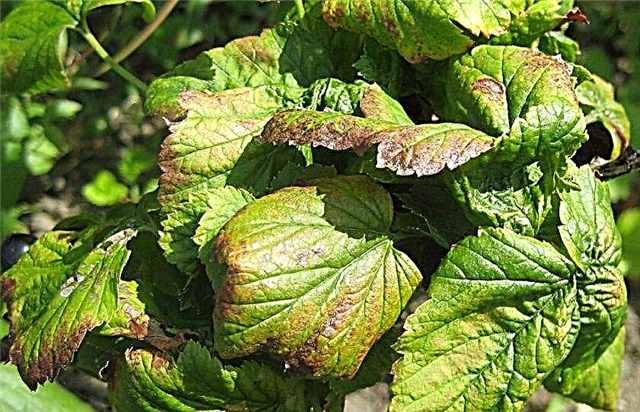
- Kidney tick. Swollen buds on branches, which gradually collapse, exposing damaged young leaves, testify to the appearance of this pest. Subsequently, the affected buds die off, and the leaves of the plant change color and deform, which leads to a significant reduction in the number of berries. To combat the pest, you need to remove the damaged branches of the bush, and then spray the currants with special preparations (for example, "Tedion").

- Fruit sawfly. The larvae of this insect harm the fruit by penetrating their flesh in order to eat seeds. In this case, the berries increase in size, and their surface becomes ribbed. Fruits damaged by the sawfly cannot be used and crumble. To stop the spread of the pest, the affected berries are plucked and destroyed, and the bush is treated with “Chlorophos”.

- Glass Shaker. This insect lays eggs in microscopic cracks on the surface of the bark of the bush, and the appeared larvae feed on shoot wood. It is almost impossible to notice the glasshouse immediately, and the affected branches after 1–2 years begin to dry out and die. If signs of the appearance of this pest are found, it is necessary to cut and destroy all dry branches, and then treat the currant with insecticides (for example, Iskra).

To prevent the occurrence of the listed diseases and pests, it is recommended to carry out such preventive measures:
- regularly weed and loosen the soil;
- adhere to the watering schedule;
- annually trim the shoots, eliminating excessive thickening;
- comply with the recommended planting pattern;
- carry out autumn digging of the soil around the bushes;
- use high-quality and healthy planting material;
- adhere to the fertilizer schedule.
Important! To destroy the larvae of pests and spores of the fungus, it is recommended to spray currant bushes with a 1% solution of Bordeaux liquid before flowering.
Harvesting and storage
The fruits on the bush ripen almost simultaneously, so you can harvest at one time. Berries are picked from the bush only after they are fully ripe and have a characteristic black color.

The basic rules for harvesting Lama currants are listed below:
- 2-3 weeks before the planned harvest, you need to stop watering and feeding, so that the fruits become sweet;
- picking fruits is recommended in the morning or evening in dry weather - moisture-saturated berries are poorly stored and quickly lose their attractive appearance;
- to preserve the beautiful shape of the berries, it is recommended to remove them from the bush individually, and not a whole bunch;
- the harvested crop is stacked in a small flat tray with a layer of 3-4 cm so that the fruits do not crumple under their own weight;
- for storage and transportation, only whole fruits are selected that have the correct round shape;
- fresh berries can be stored in the refrigerator for 2-3 days.
The fruits of the Lama variety are used to make compotes and preserves, and they are also ground with sugar and frozen in the freezer.
Even a beginner gardener will be able to independently grow black currant of the Lama variety on his plot. In order for the bushes to annually bring a generous harvest of berries, and also not to suffer from the invasion of diseases and pests, it is recommended to follow the simple recommendations listed in this article.










